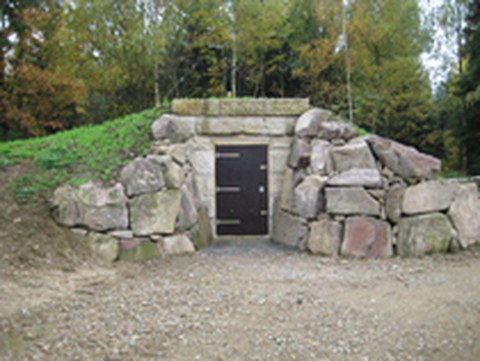Outdoor facilities at VLO Hetzdorf
Needle bed
A special feature is the 550 m² conifer bed, which was created using the Dunemann method. It consists of an approx. 40 cm thick layer of spruce needle litter and is used to grow conifers. Compared to the equivalent cultivation on mineral soil, this method produces stronger seedlings, a more favorable proportioning of the plant parts and a higher growth result with less weed infestation.
Experimental plots for research and teaching
An area of around 3500 m² is available for scientific studies that test the influence of various planting and sowing techniques on the above- and below-ground growth of plants.
An important part of this area is taken up by demonstration objects, which are set up and observed for both research and teaching purposes. Important experimental plants are
- Demonstration of the effects of various manual planting errors on the tree species silver fir(Abies alba), European beech (Fagus sylvatica), pedunculate oak(Quercus robur) and Scots pine(Pinus sylvestris)
- Presentation of different plant assortments
- Demonstration of vegetative propagation via cuttings
Facilities for seed storage
The Alemann shed is used to store seeds of heavy-seeded tree species such as oak and beech and is a special feature in its design. In addition to its use by the Sachsenforst state enterprise, the shed is also used for research into issues relating to the storage of seeds, which are observed in comparison to controlled storage in the cold storage cell of the Sachsenforst state enterprise.
Arboretum
The arboretum, established in 2001 by long-time employee DFI Martin Hartig, has an extensive collection of selected conifer species of the genera Pinus, Picea, Abies, Thuja, Chamaecyparis, Tsuga and Pseudotsuga as well as various shrub species. The collection was recently expanded by the planting of Tatar stem oaks(Quercus robur), which were presented to the Chair as a gift.

